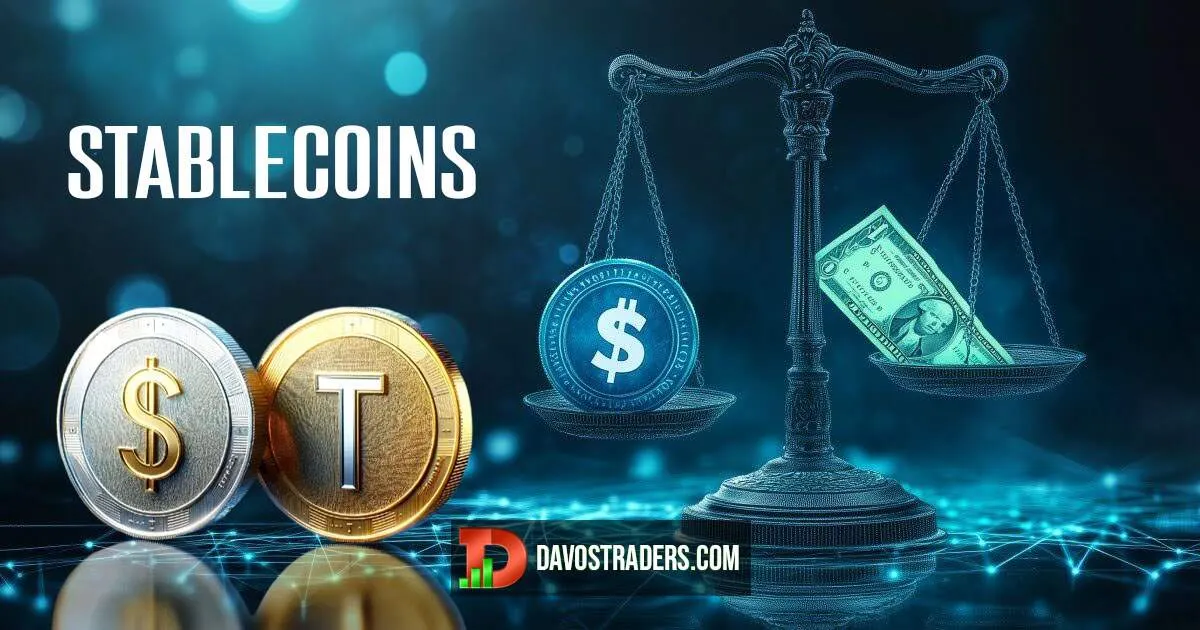Understanding Stablecoins: Why USDT, USDC, and Others Matter in 2025

Stablecoins have become a core pillar of the crypto ecosystem, offering a much-needed bridge between traditional finance and the volatility of digital assets.
Whether you're a beginner or an experienced trader using premium crypto signals, understanding what stablecoins are — and why they matter — is essential in 2025.
This article will walk you through what stablecoins are, how they work, and why coins like USDT, USDC, and newer alternatives play such a key role in today's crypto economy.
💵 What Are Stablecoins?
Stablecoins are cryptocurrencies designed to maintain a stable value, typically pegged to a fiat currency like the US dollar (USD), euro (EUR), or even gold. They aim to combine the instant processing and security of cryptocurrencies with the stability of traditional money.
Instead of fluctuating wildly like Bitcoin or Ethereum, stablecoins remain close to $1 (or their respective peg) — making them ideal for trading, saving, and transferring value without worrying about price swings.
🏦 Types of Stablecoins: How Are They Backed?
There are three main types of stablecoins, each backed or stabilized in a different way:
- Fiat-backed stablecoins (e.g., USDT, USDC): Backed 1:1 by reserves in a bank or trust. The most common and widely used.
- Crypto-backed stablecoins (e.g., DAI): Overcollateralized with crypto assets like ETH. More decentralized, but can still fluctuate slightly.
- Algorithmic stablecoins (e.g., FRAX): Use smart contracts to control supply/demand. Riskier, and some have failed in the past (like Terra's UST).
In 2025, fiat-backed stablecoins remain the dominant choice, especially for trading and institutional usage.
🔗 Why Stablecoins Matter in the Crypto Ecosystem
Stablecoins are not just digital dollars — they’re infrastructure. Here's why they’re so important:
- Liquidity and Trading Pairs: Most crypto trading pairs use USDT or USDC. They help you easily switch between assets without needing to convert back to fiat.
- Safe Haven During Volatility: Traders often move funds into stablecoins to avoid major price drops while staying within the crypto ecosystem.
- DeFi and Lending: Many DeFi platforms rely on stablecoins for borrowing, lending, and yield farming.
- Cross-border Transactions: Stablecoins allow fast, low-cost transfers globally — without needing a bank.
🧠 USDT vs USDC: What’s the Difference?
These are the two most widely used stablecoins in 2025, but they’re not exactly the same:
- USDT (Tether): The oldest and most liquid stablecoin, but historically criticized for a lack of transparency in reserves. Still extremely dominant on exchanges.
- USDC (Circle): Fully regulated and audited, often seen as the “safer” alternative. Used more in institutional and DeFi environments.
Both are valuable tools for traders — and most crypto trading signals platforms (including DavosTraders) will often suggest entries/exits into USDT or USDC depending on liquidity and volume.
📈 How Traders Use Stablecoins
If you're following crypto signals or trading actively, stablecoins are part of your daily strategy:
- Storing profits: After a successful trade, you may convert to USDT to lock in gains.
- Waiting for entry: Stay in USDC until a strong entry point is confirmed.
- Risk management: Stablecoins help minimize exposure during high-risk market periods.
At DavosTraders, we frequently use stablecoins in both free and VIP signals to manage volatility and protect capital — especially in unpredictable market phases.
🔍 Stablecoins in 2025: Trends to Watch
- Increased regulation: Governments are working on frameworks to control how stablecoins are issued and audited.
- New players: More banks and fintech firms are launching regulated stablecoins.
- Growing role in payments: Retailers and payment processors are increasingly accepting stablecoins, even outside the crypto space.
Stablecoins are evolving fast — and their role is only growing.
🧭 Final Thoughts: Stability Is Power in Crypto
In a world where most crypto assets swing wildly in price, stablecoins offer a rare sense of reliability. Whether you’re just starting out or following expert crypto trading signals, understanding and using stablecoins properly is a must in 2025.
If you’re serious about trading, don’t ignore the power of timing your entries and exits using USDT or USDC.
👉 Join our free Telegram channel for daily crypto market insights, or take your strategy to the next level with our VIP signals, which include smart stablecoin-based setups and capital protection strategies.
